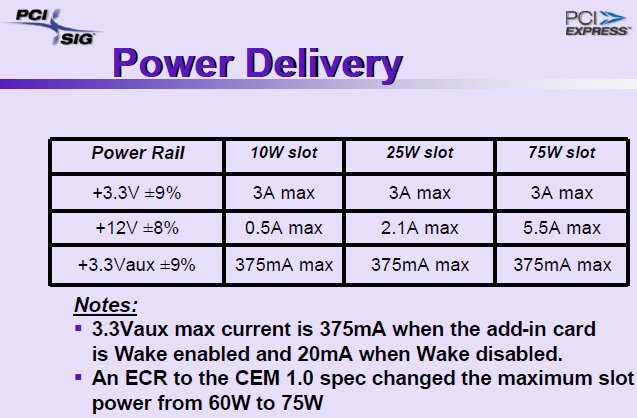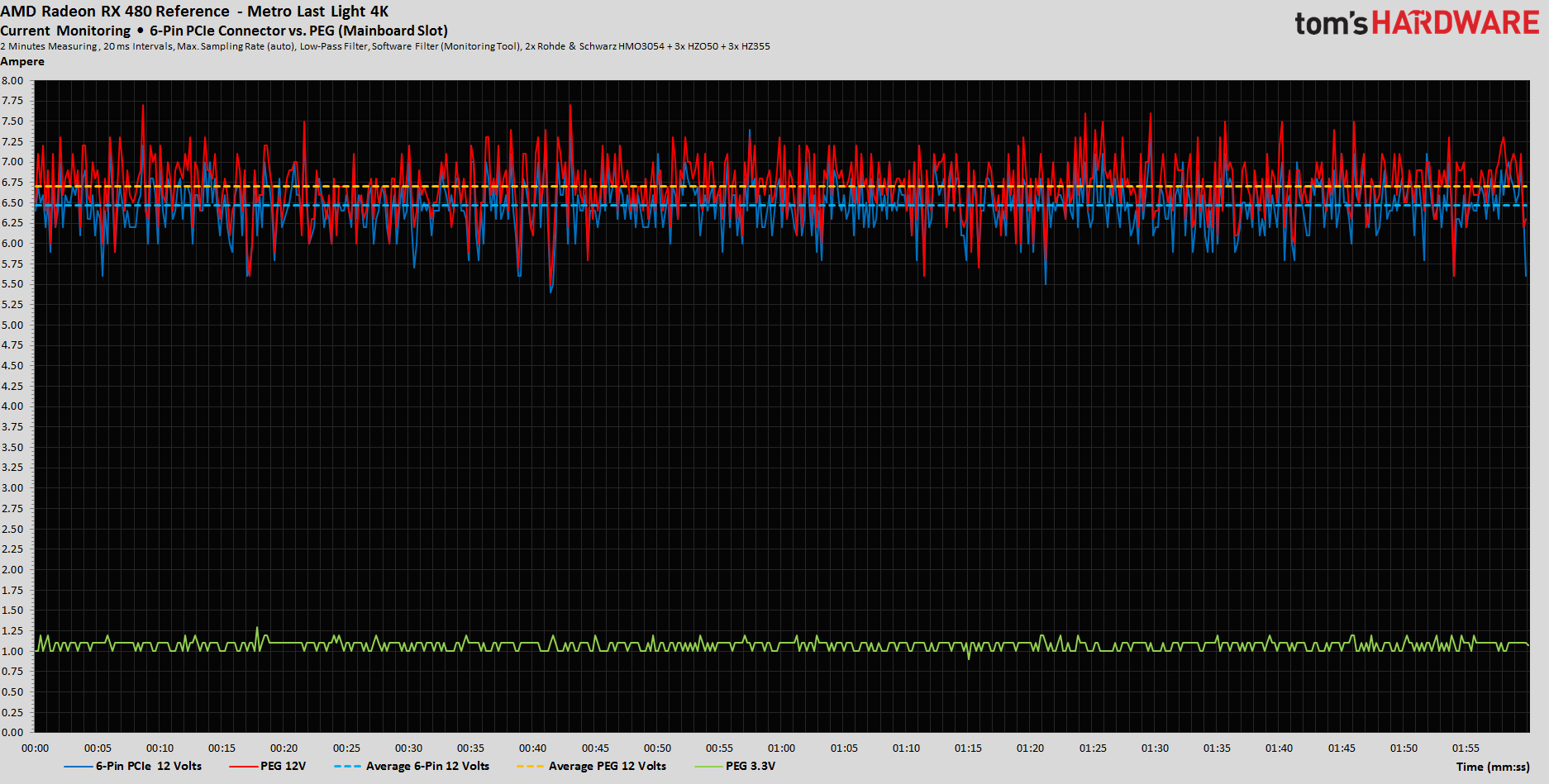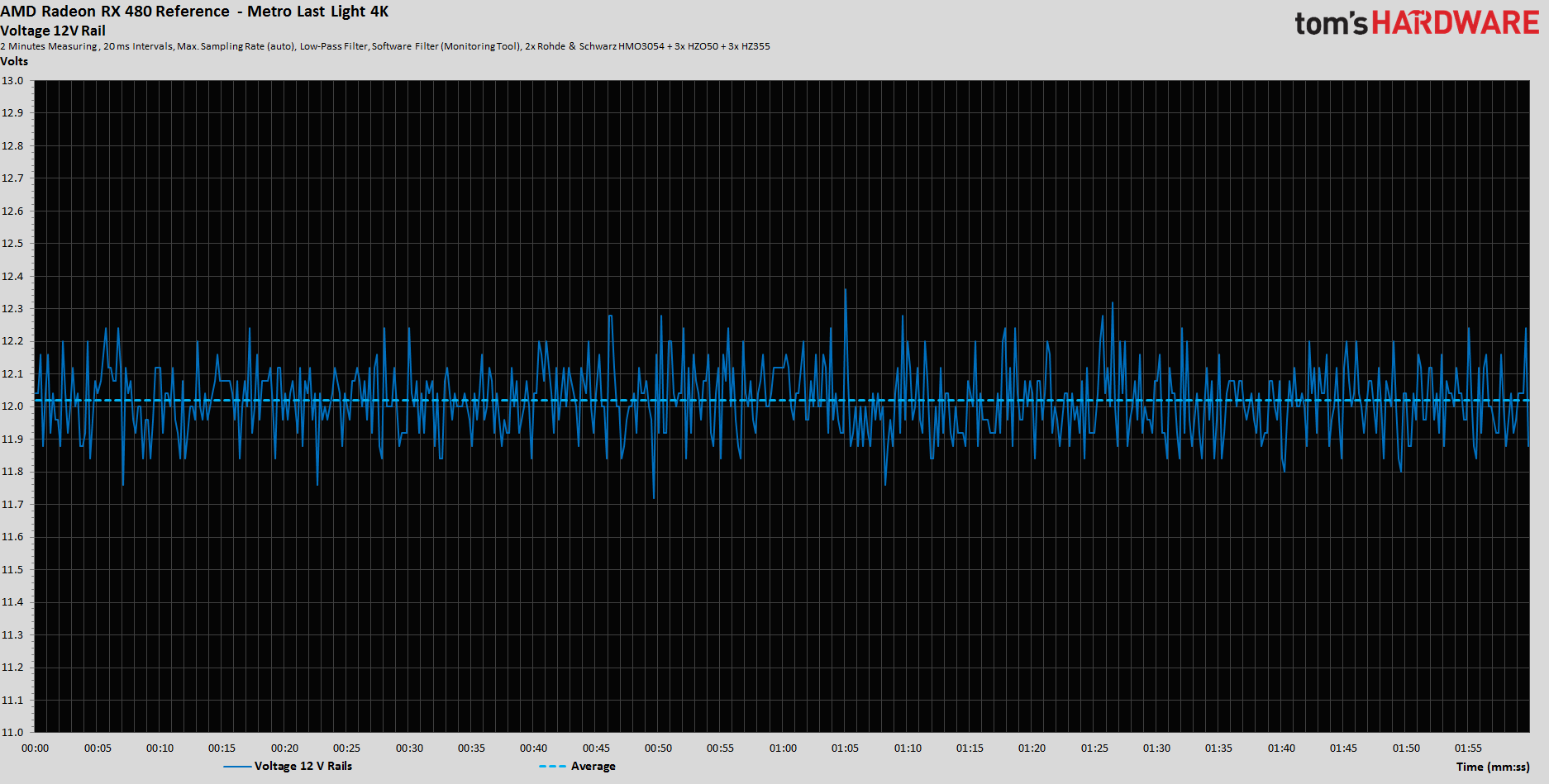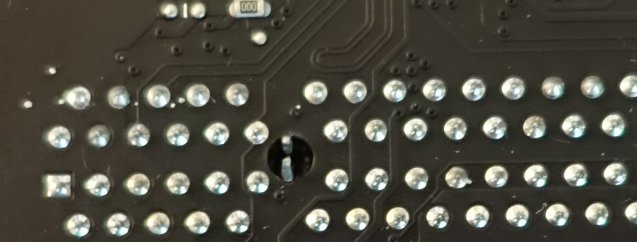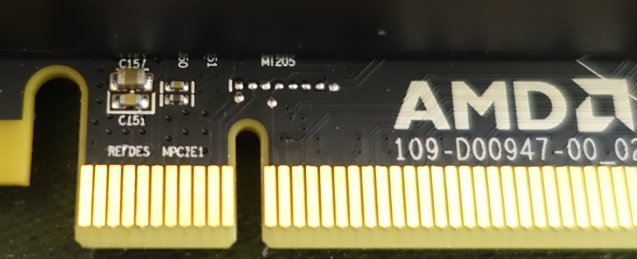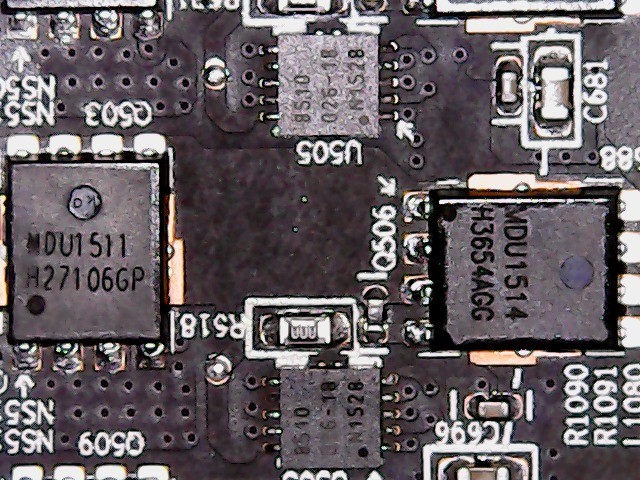AMD Radeon RX 480 Power Measurements Repeated And Clarified
Power Consumption, Specifications And Conclusion
What Do The PCIe Slot Specifications Actually Say?
Specifications covering just how much power is allowed to flow through the pins of a 16x PCIe motherboard slot were established a long time ago. However, saying that they include a maximum wattage isn’t just misleading, but flat out false.
The PCI-SIG defines the maximum amperage for the 12V motherboard slot connector as 5.5A, with a maximum tolerance for voltage of plus or minus eight percent (see table below). A quick multiplication of this number by 12V yields either the reference point of 66W, or the maximum of 71W that includes the eight percent.
Then again, all that these numbers provide is really just a general reference point, because the 12V rail voltage is almost never actually an exact 12V. Fortunately, we have our power measurement results from the previous page. We’re using the larger graph again, and we limit it to the currents we actually measured (click picture to enlarge).
Again we measure 6.74A at the PCIe slot, which is too high. The corresponding voltages are also of interest, but they only indirectly contribute to the question of whether the specifications were exceeded.
It’s plain to see that the average does stay within the ATX specification’s range, but the fluctuations are quite significant. The capacitors on the secondary side of power supplies are always a sensitive subject. In case of a load spike, a graphics card is able to empty the capacitors faster than a simple and unsuitably-configured, switch-mode power supply can fill them back up.
We also logged the voltages with our digital multimeter, HAMEG's HMC 8012, which has a storage function. There were no differences.
Above The Norm, But Less Drama
Our measurements show that the motherboard’s PCIe slot averages 6.74A at 12V. This means that our numbers exceed the norm by 1.24A, a significant 23 percent. And this is already counting from the absolute maximum allowed by the PCI-SIG’s specifications.
Get Tom's Hardware's best news and in-depth reviews, straight to your inbox.
In our launch article, we put our result into a broader context and pointed out that this shouldn’t result in any damages, as long as the system’s hardware conforms to the usual standards. Here’s a quick recap:
Quote from our Launch Article:"To be clear, your motherboard isn't going to catch fire. But standards exist for a reason."
Thus, any claims about unnecessarily fanning flames or misrepresenting our results are unwarranted. We presented our data and our analysis, and it's difficult to control what conclusions others draw and publish.
Here's why we don't think this is such a big deal. When the specifications were introduced, four pins were reserved for the 12V power supply, two each on the top and the bottom of the board. This can be seen in the picture of an old graphics card above.
The neighboring third pin on the top was reserved, but not actually assigned to anything. But now, in the latest standards, it’s generally used as an additional 12V pin, along with the other four, making it possible that a total of five pins are available for the 12V power supply. However, the allowed current was not changed to be compatible with older hardware.
The sentence about the impact of the exceeded specifications might have gotten lost in the launch article's sheer amount of information. To make our position absolutely clear, here’s an annotated summary of it:
Summary
1. Our modified second round of measurements replicated the results of our first round. The amount of current flowing through the motherboard PCIe slot’s 12V rail exceeds the upper limit of the tolerance range described in the PCI-SIG specifications. Our repeated measurements of the reference card show currents 23 percent above the PCI-SIG norm. The voltage tolerance range doesn’t change this at all because only the current matters here.
2. This means that we’re bucking the current trend of reporting lower measurement results the second time around. The same measurement equipment that we’ve depended on for years and that’s always been calibrated on schedule yielded very similar and reliable results, no matter if we used a very high temporal resolution, or a lower temporal resolution that smoothed over peaks and valleys. The question should really be why some other sources are reporting different results the second time around, and what that means for their other, older reviews.
3. We’re assuming that the loads are distributed symmetrically across the phases and voltage converters. We’re also assuming that four of the phases are connected via the motherboard’s PCIe slot (physically or balanced over firmware). We’re not the only ones to state the latter; several colleagues who have approached the subject arrived at the same conclusion. Only AMD could tell us for sure, though. Based on these assumptions, there’s going to be an overload, no matter the test sample or other random variations.
4. Current hardware should be able to handle this amount of current without taking any damage, as long as the motherboard’s slots are clean and not corroded. It’s also advisable to make sure that the graphics card sits precisely in its slot. This should always be the case, though, even with significantly lower amounts of power.
5. Load peaks might result in audible interference because of nonlinearities in the analog audio section.
6. In the future, we’ll try to offer both the large view of the smoothed-over curves and the graphs that include the spikes we evaluated for plausibility.
Conclusion
The AMD Radeon RX 480’s power supply configuration exceeds the limit defined by the PCI-SIG’s specifications. It doesn’t exceed them by a massive amount, but it does do so reliably. Norms should be respected, especially if they already have a very generous built-in tolerance range. We never implied in our launch article that a system made up of solid components might be directly damaged by an AMD Radeon RX 480 graphics card running at stock clock frequencies.
There shouldn’t be any problems unless cheap, dirty or outdated components are used, the card isn’t installed correctly, or the amount of power drawn is increased by overclocking the card.
Over the years, we’ve internally reviewed our own measurement methodology, revising and refining our procedures and equipment in cooperation with our partners in the industry. We’ve even written our very own proprietary software package to analyze the huge amounts of data our equipment generates. Finally, we’ve worked successfully with graphics card manufacturers to verify and compare the results. Since different manufacturers employ different approaches to measuring power consumption, our method has always provided a high level of comparability.
We’d like to thank the specialists of Rohde & Schwarz, who have provided us with technical advice and suitable equipment for the past three years. They’ve made problems, like low sampling rates, aliasing, and distortion of the results by noise things of the past. And we most certainly do know how to use our equipment. In fact, we’ve documented how we use it in our many reference articles about our measurement technologies (infrared technology, PC audio and noise emissions, power consumption).
Addendum about the Mega-MOSFET: Overclocking Heaven, Efficiency Amplifier, or Lifeline?
We’d like to add one other short note. We’ve read here and there that AMD is using a much larger MOSFET than would be necessary on the low side (GPU side) with the MDU1511. The argument is that this results in massive overclocking potential.
This component is capable of handling up to 100A, which means that every phase could be pushed to extreme limits, beyond 100W.
The reason that AMD chose this particular MOSFET is probably completely different, though: it has a very low internal resistance of just 2.4 mΩ. This minimizes loss in the power converters, resulting in both a cooler card and a lower power consumption. This is definitely a step in the right direction, and it would actually even allow the PWM controller to distribute the loads asymmetrically.
Let’s close the circle and go back to the very beginning, in particular AMD’s statement regarding this entire affair. We’re very excited to see how AMD will fix the problems using just a new driver, and without a firmware update, as the company has indicated.
- 1
- 2
Current page: Power Consumption, Specifications And Conclusion
Prev Page Radeon RX 480 Power Measurements And Possible Causes
Igor Wallossek wrote a wide variety of hardware articles for Tom's Hardware, with a strong focus on technical analysis and in-depth reviews. His contributions have spanned a broad spectrum of PC components, including GPUs, CPUs, workstations, and PC builds. His insightful articles provide readers with detailed knowledge to make informed decisions in the ever-evolving tech landscape
-
ssdpro "SummaryReply
1. Our modified second round of measurements replicated the results of our first round. The amount of current flowing through the motherboard PCIe slot’s 12V rail exceeds the upper limit of the tolerance range described in the PCI-SIG specifications. Our repeated measurements of the reference card show currents 23 percent above the PCI-SIG norm."
So, the summary was the same. The new article just puts more emphasis on the minimal risks/dangers than the compliance failure itself. Seems like an attempt to please someone, or appease some source of revenue. -
FormatC Reply18227882 said:So, the summary was the same. The new article just puts more emphasis on the minimal risks/dangers than the compliance failure itself. Seems like an attempt to please someone, or appease some source of revenue.
Totally wrong. Not only the summary is the same, the results are also totally similar. And exactly this is the difference to a lot of other re-benches I saw after the launch. I got a lot of feedback about our measuring methods and also had to read a lot of crap and allegations on other sites and forums. This was the reason why I simply does the same: low-res measuring, even more low-pass-filtering and enlarged pictures. Funny: nothing has been significant changed. This few spikes goes mostly in both directions, so you have the same average as cutted or smoothed curves (different choise).
The new article just puts more emphasis on the technical background, possible reasons and the math behind if it's allowed to correct you with my own words :)
The goal was to find the reason for the results and to be honest: my family lost the whole weekend with me and I lost over two days of my lifetime. That means: I does it not for my pleasure but I feel it's only fair to our readers to clarify something. :)
And finally to be accurate: This is only a question of current, the power consumption is secondary. ;) -
Placobravo I wonder if they could simply solve this by a driver update, so that the card could function as any other card (which means taking most of the power from the 6-pin connector rather then the PCI-E).Reply
Anyway at this point it is clear to me that anybody wishing for an rx-480 should wait for aftermarket solution. Brands like Sapphire will definitely solve those issues :) -
frzsk Specifications covering just how much power is allowed to flow through the pins of a 16x PCIe motherboard slot were established a long time ago. However, saying that they include a maximum wattage isn’t just misleading, but flat out false.Reply
The PCI-SIG defines the maximum amperage for the 12V motherboard slot connector as 5.5A, with a maximum tolerance for voltage of plus or minus eight percent (see table below). A quick multiplication of this number by 12V yields either the reference point of 66W, or the maximum of 71W that includes the eight percent.
EDIT:
You say in the first paragraph that there's no max wattage but in the 2nd paragraph you say that there is one. -
FormatC Reply18228013 said:I wonder if they could simply solve this by a driver update, so that the card could function as any other card (which means taking most of the power from the 6-pin connector rather then the PCI-E).
Anyway at this point it is clear to me that anybody wishing for an rx-480 should wait for aftermarket solution. Brands like Sapphire will definitely solve those issues :)
The protocoll, used by their PWM controller allows a re-balancing and it is in theory also possible to supply the whole card with only two of this oversized phases :)
I'm sure they will move a little bit more load to the 6-pin PCIe, beacuse he is completely connected. My own tests showed that they will survive 300 watts and more without damage.
18228022 said:Specifications covering just how much power is allowed to flow through the pins of a 16x PCIe motherboard slot were established a long time ago. However, saying that they include a maximum wattage isn’t just misleading, but flat out false.
This is exactly what I wrote on top of page Two. Only the current is interesting, the voltage is within the ATX specs and a completely other story. The translation from German is not clear enough - in original I wrote, that this wattage product is used from the masses to simplify the problem but it is totally unusual ;)
I wrote this also to our editor-in-chief and hope that he can fix it asap. Thx for finding. ;)
-
JRHERITA This is bad - because over time that 23% spec will be harder and harder on the motherboard components. A chip that runs hotter consumes more power -- and an older GPU will certainly run hotter due to a less than perfectly clean case/GPU fan setup, the transistors aging (perhaps needing more voltage to work causing power to go up). On top of this, the motherboard connectors don't stay pristine forever, nor do the motherboard power circuits or even the power supply. Being overspec may work OK now, but in a few years, that's not so certain.Reply -
gorgamin A real Electrical Engineer has answered some of the myths reviewers have been propagating. I think most of these reviewers need to go back to EE school (incl. Tomshardware) as they don't seem to grasp what they're saying.Reply
There is nothing wrong with the RX480
https://www.reddit.com/r/Amd/comments/4rbw8p/facts_about_pcie_connectors/ -
cilliers Tomshardware very seldom replicates experiments for the same product, so therefore this article looks really out of place. As I was reading this second article , I couldn't help imagining an angry AMD marketing man on the phone with the TH editor, demanding at least a second round of tests with a newly shipped card. This is so funny, especially the 6 points listed for clarification in the summary. By the way. "Assumptions" to an experiment always go in the paragraph about the experiment design, not at the back...FYI. This is just too funny. Thank you TH.Reply -
octavecode Most GPU makers will just replace the 6pin with 8pin connector and maybe add a couple of phases or reroute them.Reply -
FormatC Reply
Ok, so the PCIE-SIG is wrong and a nursery... As I wrote: to be comparable to (older) hardware. Send this engineers's comedy to someone from the SI business, he will hit you :D18228079 said:A real Electrical Engineer...
Tomshardware very seldom replicates experiments for the same product, so therefore this article looks really out of place.
Also wrong. They very seldom translated my content from German. To be honest: AMD is not paying for my pleasure or some sexual services. :D
Also funny: yesterday I was totally Nvidia-biased, today I'm AMD biased. So what? :P
